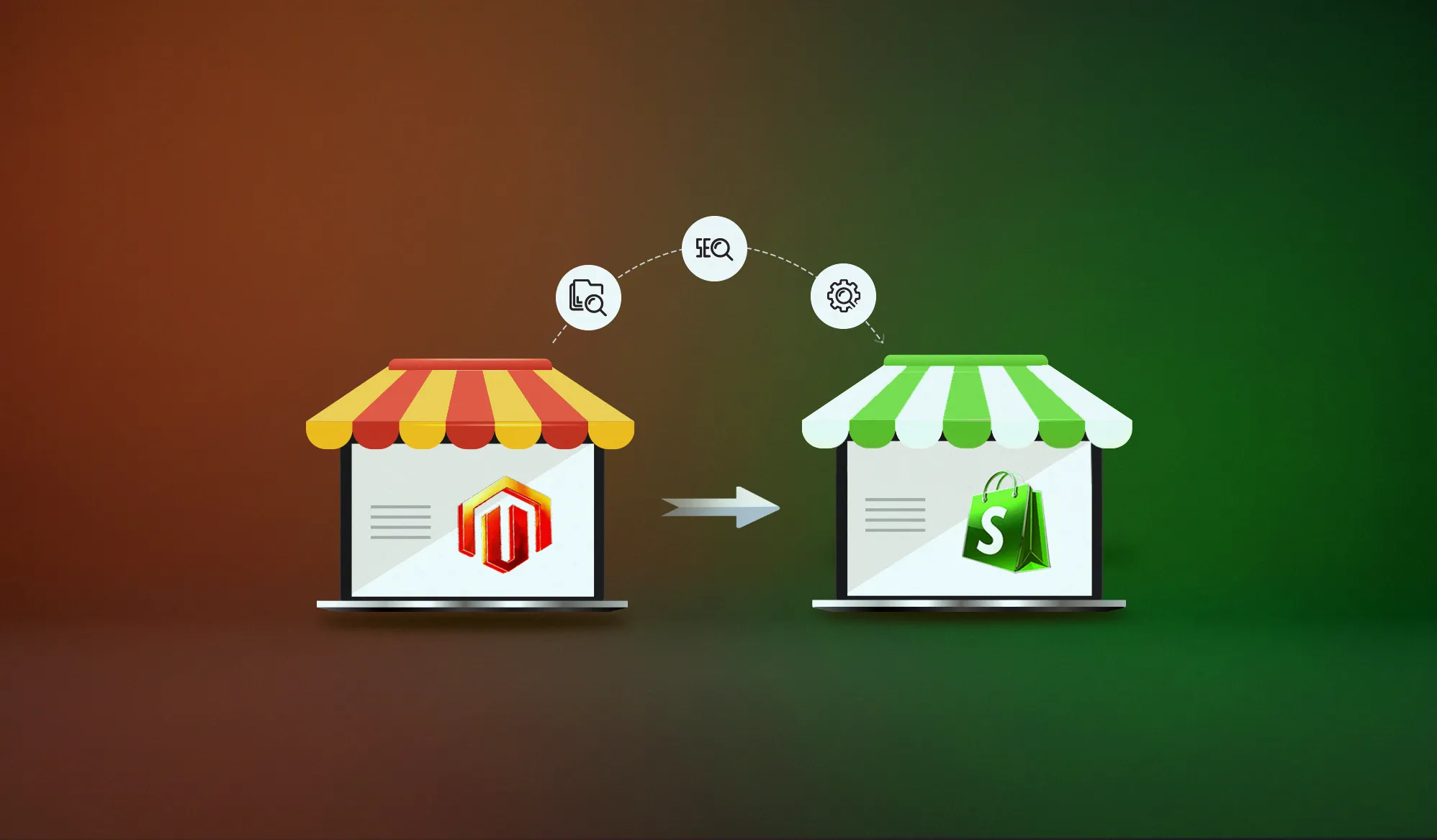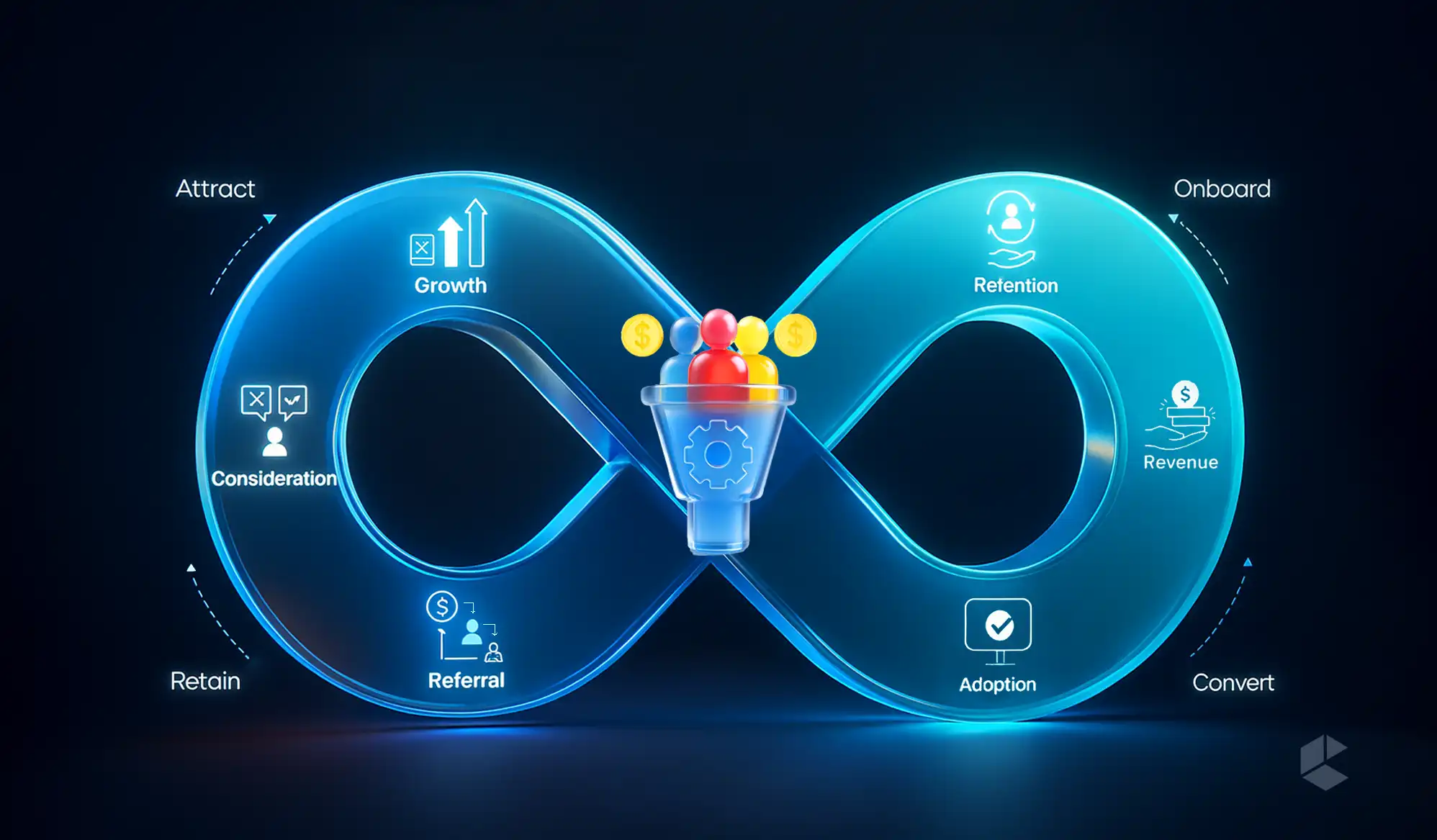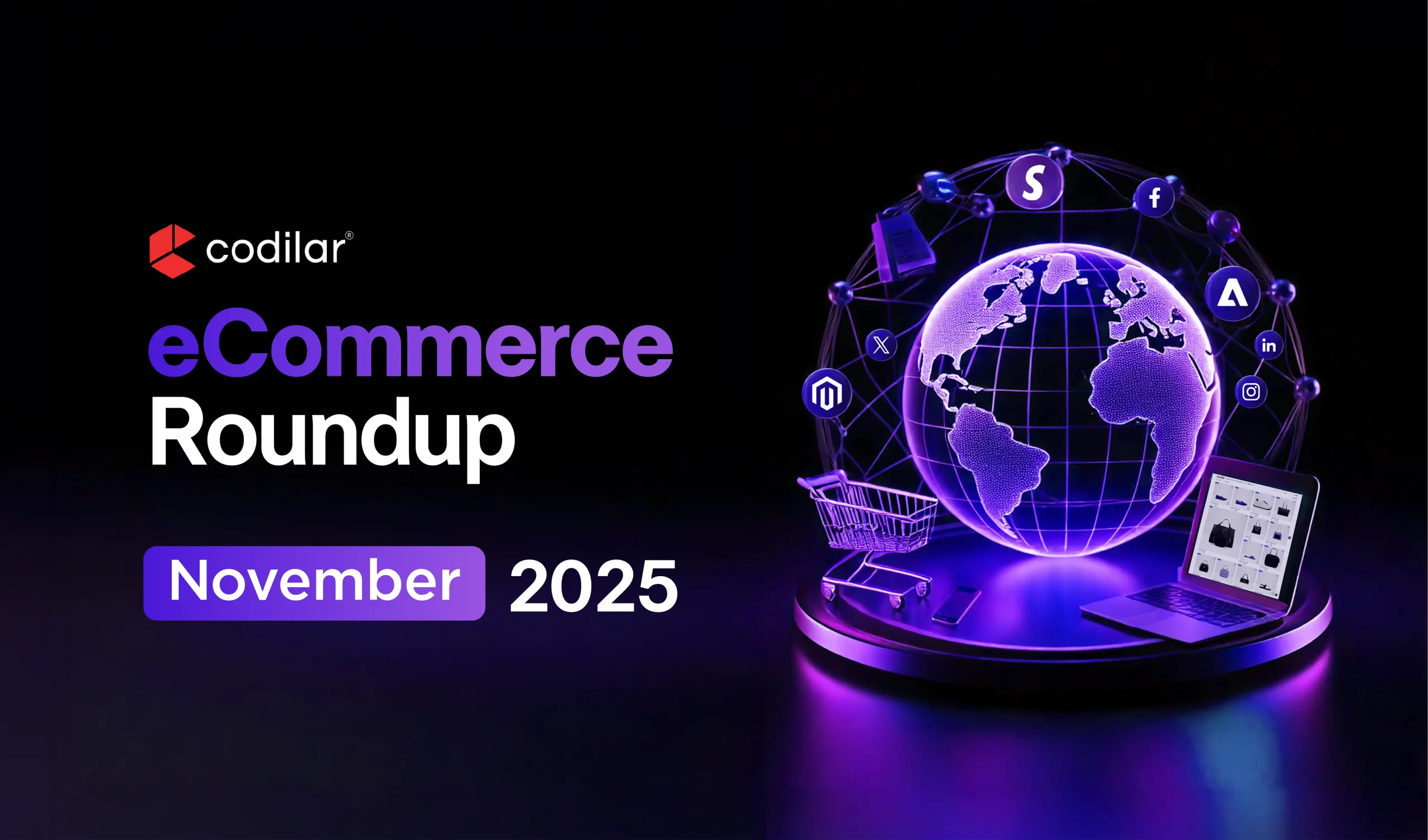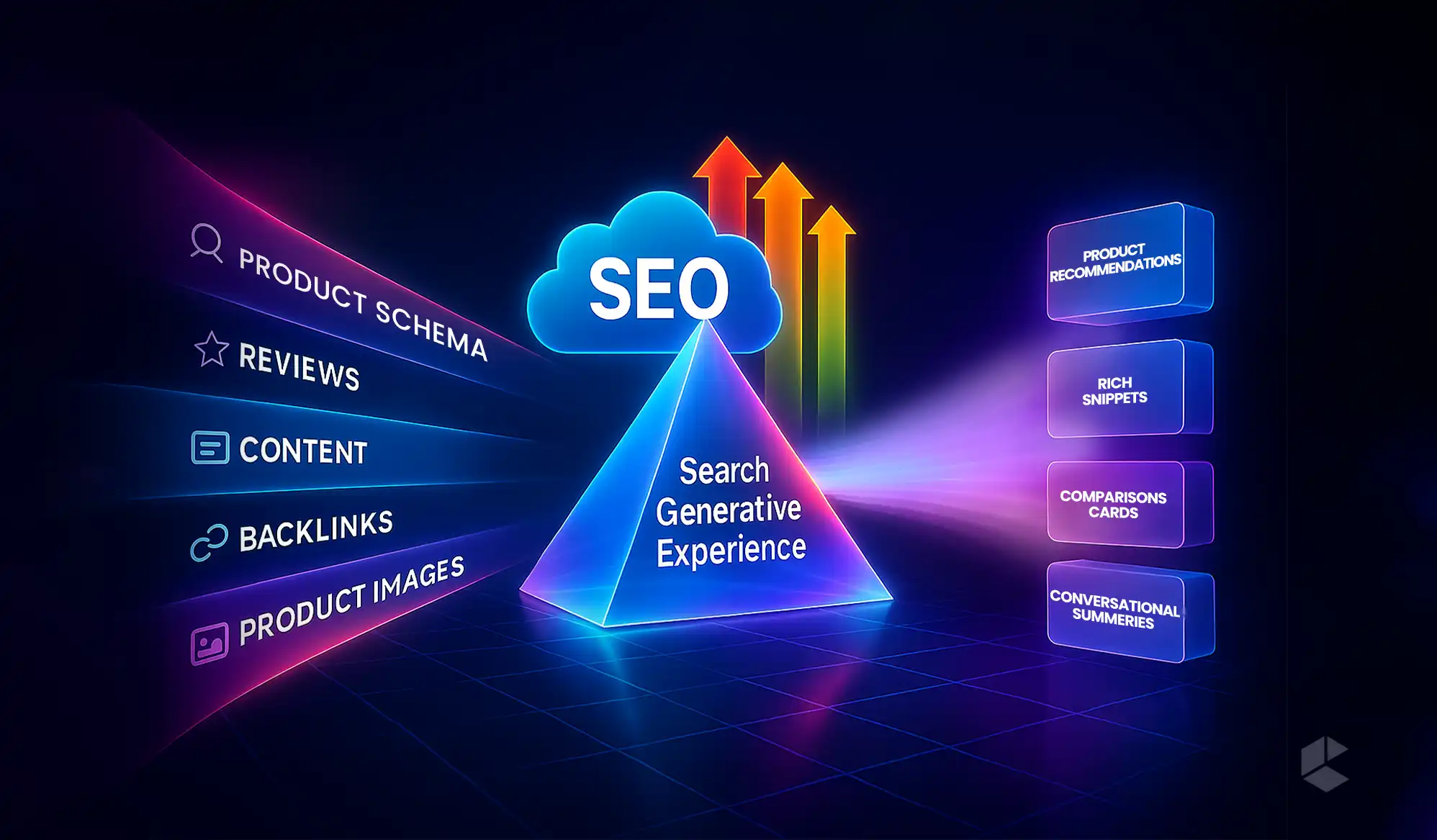- Migrating Magento stores to Shopify offers simplified store management without any performance loss or scalability issues.
- Planning is crucial in eCommerce store migration, which includes data mapping, testing, and redirections.
- You can replace Magento extensions with Shopify apps, but custom functionalities may require custom development.
- For a smooth SEO transition, make sure that you are migrating metadata correctly and properly configuring 301 redirects.
- The store migration does not transfer customer passwords. Customers need to reset their passwords after the migration is complete.
Adobe Commerce and Shopify, being among the top eCommerce platforms, are always two customer favorites. With Shopify and Shopify Plus offering advanced features, performance, and scalability, all while keeping the complexities in check, a lot of users want to switch from Magento (Adobe Commerce) to Shopify.
However, migrating from Magento to Shopify is a challenging task. Especially when it comes to migrating your eCommerce store, various complications may get involved. From data loss to performance drops, you have to consider every factor to ensure an effortless migration.
In today’s tutorial, we are going to explain the entire migration process in detail. With our step-by-step process, you can complete the migration with zero errors.
Why Migrate from Magento to Shopify?
Magento is known for its flexibility and excellent eCommerce capabilities. For businesses that need tailored features and full control over every eCommerce element, this tool proves to be an outstanding option. But great power comes with great complexity in this case. On top of that, it requires time and effort for development, hosting, security, and maintenance.
In contrast, Shopify offers a more streamlined, simple, and user-friendly experience, which is one of the biggest reasons for many migrations from Adobe Commerce. Let’s check out the key reasons:
Ease of Use vs. Control
- Magento
It offers unmatched flexibility and customizations for businesses with unique workflows. Businesses that have a dedicated tech team that can handle advanced coding and complex eCommerce operations can benefit from Magento.
- Shopify
It offers a SaaS (Software as a Service) environment that eliminates technical hassles by a large margin. Designed with non-tech users in mind, Shopify simplifies operations and maintenance, which helps you focus on sales and marketing instead of obsessing over your online store management.
Cost Considerations
- Shopify Costs
Shopify comes with a lower setup and maintenance cost, with plans ranging from $29/month to $299/month. While these plans would suit most businesses, enterprise-grade businesses may need to switch to Shopify Plus, which starts from a $2300/month subscription cost. - Magento Costs:
While Magento Open Source is technically free, it still comes with a number of additional costs, including development costs, hosting, maintenance, security, and updates. These may add up to the final expense.
Preparing for Your Migration: Planning and Prepping
You have to make some preparations before proceeding with your store migration from Magento to Shopify. Since the store migration is a critical process, success depends on your attention to detail.
1. Define the Objectives
Before anything else, make your objectives clear. List the reasons why you are opting for the migration. This way, you can make a foolproof migration strategy that meets your business requirements. Ask yourself whether you want better ease of use or more control. Consider whether you need out-of-the-box designs or deep customizations. Decide between having your store fully hosted or maintaining and updating the website by yourself or your team.
2. Audit Your Current Magento Store
A rigorous audit of your Magento store can help you with the migration process.
- Products & Variants: How many items are there in your inventory? Do you have any outdated items there?
- Customer Data & Order History: Take the time to audit the customer data and order history, as accurate data can lead to better customer relationships and informed future marketing.
- Content & SEO Structure: To make sure that you don’t lose organic search ranking, you need to catalog your blog posts, URL structures, pages, and metadata.
- Apps & Extensions: Create a list of essential functionalities, as Shopify doesn’t have a one-click equivalent for every Magento customization. Marketing integrations, custom features, payment gateways, etc., are the functionalities to consider.
3. Create a Comprehensive Backup
Take a full backup of the current data on your Magento store to make sure you don’t lose a single byte of data during the migration.
4. Set a Realistic Timeline
Your Magneto store migration isn’t a DIY project that you can finish on the weekend. Depending on the complexity, it can take several days to even several months! A great way to reduce downtime and disruption is to schedule the migration during off-peak periods. Always remember that the more time you invest in planning, the more it helps you build a more polished store.
Migrating From Magento to Shopify: Step-by-Step Process
Once you are done with the preparation, it’s time to dive into the main task. Following is the entire migration process, divided into several steps for better understanding.
Step 1. Choose Your Migration Method: Automated Tools vs. Manual Migration
You can choose between manual migration and automated migration, both of which have their own advantages based on your use case.
- Automated Migration Tools:
For straightforward Magento stores, tools like Skyvia or Matrixify can prove to be highly effective in transferring orders, customers, products, etc., automatically and without any hassle. They also use redirections to keep your store SEO-optimized. - Manual Migration:
For the Magento stores that include a lot of customizations, auto-migration may not be the correct approach due to the complexities. A manual migration would be the perfect way to maintain the accuracy and precision you need. It involves exporting your Magento store data in CSV files, mapping fields, and importing them into Shopify. While migrating manually, you need to invest more time and pay more attention to details.
Note: If your Magento store includes highly advanced customizations, you may need additional custom development on Shopify to replicate the functionalities properly.
Step 2. Data Mapping and Exporting
Data mapping is the process of matching various Magento fields to corresponding Shopify fields. Without accurate data mapping, your store migration may run into several errors that are hard to resolve later.
- Products: Check product titles, descriptions, pricing, images, inventory counts, and SKUs.
- Categories/Collections: Make sure that your products are properly organized and easy to find.
- Customer Details: Check customer names, addresses, emails, and order histories.
- Orders: Note down the dates, amounts, and statuses of your past and current orders.
- Content: Blog posts, pages, SEO elements, and metadata.
Once you have mapped all the data perfectly, export it in CSV files (for manual migration).
Step 3. Importing Data to Shopify
Now, it’s time to import the mapped data. You can use an automated tool or upload CSV files manually. Here are the things you need to remember while importing data to Shopify.
- Validate Data Integrity: Make sure that all product variants are accurate, product images load perfectly, and descriptions are up to the mark.
- Setup SEO Redirects: Shopify’s URL structure is different than Magento’s. To keep your search rankings intact, you need to implement 301 redirects. But you need to remember that although you get easier SEO control on Shopify, the platform doesn’t offer the granular control of Magento.
- Test in a Staging Environment: To identify any existing issues, you should test your imported data by launching it in a staging store first.
Step 4. Migrating Your Store Design
The design of your store shows your brand personality. With Shopify, you can get a number of modern themes. Whether you use a ready-made template or create a custom design, Shopify helps you solidify your branding. When migrating your store design, here are the things to keep in mind:
- Brand Consistency: Your new Shopify store should reflect your brand image.
- Responsive & User-Friendly: With more and more shoppers using mobile devices for shopping, a responsive and mobile-first design is a necessity.
- Customizations & Integrations: If you had custom integration on your Magento store, double-check whether you can replicate the same features or functionalities with Shopify apps or need to build Shopify-specific features altogether.
Step 5. Testing and Quality Assurance
Testing is probably one of the most important steps of your migration process, as it enables you to fix every imperfection and error before launching your store.
- Functional Testing: A seamless user experience is the foundation of a successful eCommerce store. Ensure that features like product search, navigation, add-to-cart, checkout, form submissions, etc., are working well for a great shopping experience.
- Content Verification: Product details, images, videos, blog posts, etc., all need verification for you to determine whether they are displaying correctly.
- SEO Integrity: Make sure there are no broken links or incorrect redirects, which will impact your new store’s SEO performance.
- Mobile Responsiveness: Test your store on numerous screen sizes, from mobile devices, desktops, and laptops to tablets.
- Integration Testing: Validate that any integrations, such as shipping modules, payment gateways, third-party integrations, etc., are functioning without any issues.
Step 6. Post-Migration Steps
Even after you launch your site, your migration doesn’t end. There are some post-migration steps you need to consider.
- Monitor Performance: Keep track of your site speed, uptime, and user interaction through various tools and analytics.
- Continuous SEO Audits: Check the search rankings and redirects regularly to preserve your store’s SEO health.
- Customer Communication: Make sure that the migration does not affect customer experiences. Send an alert regarding the migration and include FAQs and live support on your store to resolve any difficulties they may come across.
- Gather Feedback: Take notes from your audience regarding their experience with the migrated store. Optimize your store by resolving all negative feedback.
- Documentation Updates: Revise the support documents and internal guides to align them with the Shopify environment.
Best Practices and Common Mistakes
When transferring your eCommerce site from Magento to Shopify, proper care is necessary. Follow the best practices and avoid common mistakes to guarantee a successful migration.
Best Practices
- Select the Suitable Process: Ensure that whether you are using an automated migration tool or a custom script, they are aligned with both the complexity of the data and the requirements of your store. This can lead to a quicker migration and fewer errors.
- Detailed Data Mapping: Use highly detailed spreadsheets to compare the data on Magento vs. Shopify. This data mapping will assist in preventing mistakes when data gets transferred into the new store.
- SEO Strategy & 301 Redirects: Ensure proper configuration of 301 redirects to bridge the gap between Magento’s and Shopify’s different URL structures.
- Thorough Testing: Launch your store in a staging environment and test it to avoid any mishaps or mistakes once the store goes live.
- Keep Stakeholders in the Loop: Make sure that you are informing your customers, developers, and all team members regarding the migration and timeline. Inform them about the expected downtime and future changes.
Mistakes to Avoid
- Overlooking Customizations:
Shopify may not offer functionalities that properly replicate the deep customizations on Magento. In such cases, you may have to develop custom Shopify apps. - Ignoring SEO Differences:
While the SEO process is way easier in Shopify compared to Magento, it also lacks the advanced control that Magento offers. Ignoring this difference can cost you organic traffic. - Inadequate Backups:
Never compromise on backups. Store every single data point properly before starting the migration process to avoid data loss. - Underestimating Time & Complexity:
Always include additional time in your migration timeline for unexpected errors. Migrating your Magento store to Shopify isn’t a quick fix. - Cost Miscalculations:
In terms of setup and maintenance, Shopify may be more cost-effective in general. However, when you consider the premium apps and Shopify Plus subscriptions, the total cost can increase significantly.
Final Thoughts: Should You Migrate Your Store?
Migrating your store from Magento to Shopify isn’t only a technical shift – it’s a strategic decision impacting your customer experiences, daily operations, and overall platform management. While Shopify equips brands with a user-friendly platform, a fully hosted environment, and simplified operations, Magento still remains relevant for those who need cutting-edge customizations and advanced SEO control.
You should not migrate your eCommerce store simply because there’s one ‘winner’ between these two platforms. Rather, your migration should be driven by the fact that one platform offers you more convenience while aligning better with your business and requirements.
Following the above process will help you migrate your Magento store to Shopify seamlessly while significantly reducing downtime and errors.
If you are interested to migrate your Magento store into Shopify contact Codilar Technologies.
FAQs
Store migration isn’t a one-size-fits-all process. If you have a basic store with basic customizations, it may take a few days, while the duration can go up to weeks and even months if your Magento store includes custom features, huge inventory, large catalogs, and third-party integrations. Before jumping into the migration process, it’s better to spend time on data mapping, planning, testing, and SEO transitions, which can ensure that you don’t waste time fixing errors later.
Customer passwords cannot be migrated from Magento to Shopify directly because of the different encryption systems used by the two platforms. Customers have to reset their password when they log in for the first time on your Shopify store. This is why it’s important to keep the customers in the loop regarding the migration. With prior information on the migration, customers can be better prepared.
If you follow the right process, you won’t! From configuring 301 redirects on your old URLs to ensuring that alt texts, structured content, and metadata are properly migrated, there are a few things to consider to avoid lost ranking. While there can be a temporary drop in search ranking, this is nothing that sitemap resubmission and proper SEO practices can’t fix. Many merchants even reported better ranking as a result of the clean codes and faster loading time Shopify offers.
While it’s not possible to migrate Magento extensions to Shopify, you can get most functionalities from the huge library of Shopify apps. When it comes to tailored features, there are two ways you can migrate them. First, you can find a Shopify app that replicates that functionality, or you can custom-build the functionality using Shopify’s APIs. It’s always recommended to find the Shopify equivalent solutions before you start the migration process.
Yes, Shopify Plus can be an amazing alternative to Magento’s enterprise-level users. With features ranging from advanced automation tools and customizable checkout to dedicated account support and higher API limits, the platform has immense potential to replace Magento on many occasions. However, if your store needs highly customized backend logic, Shopify Plus may not be a suitable option. So, when choosing between these two platforms, evaluate your exact requirements.









